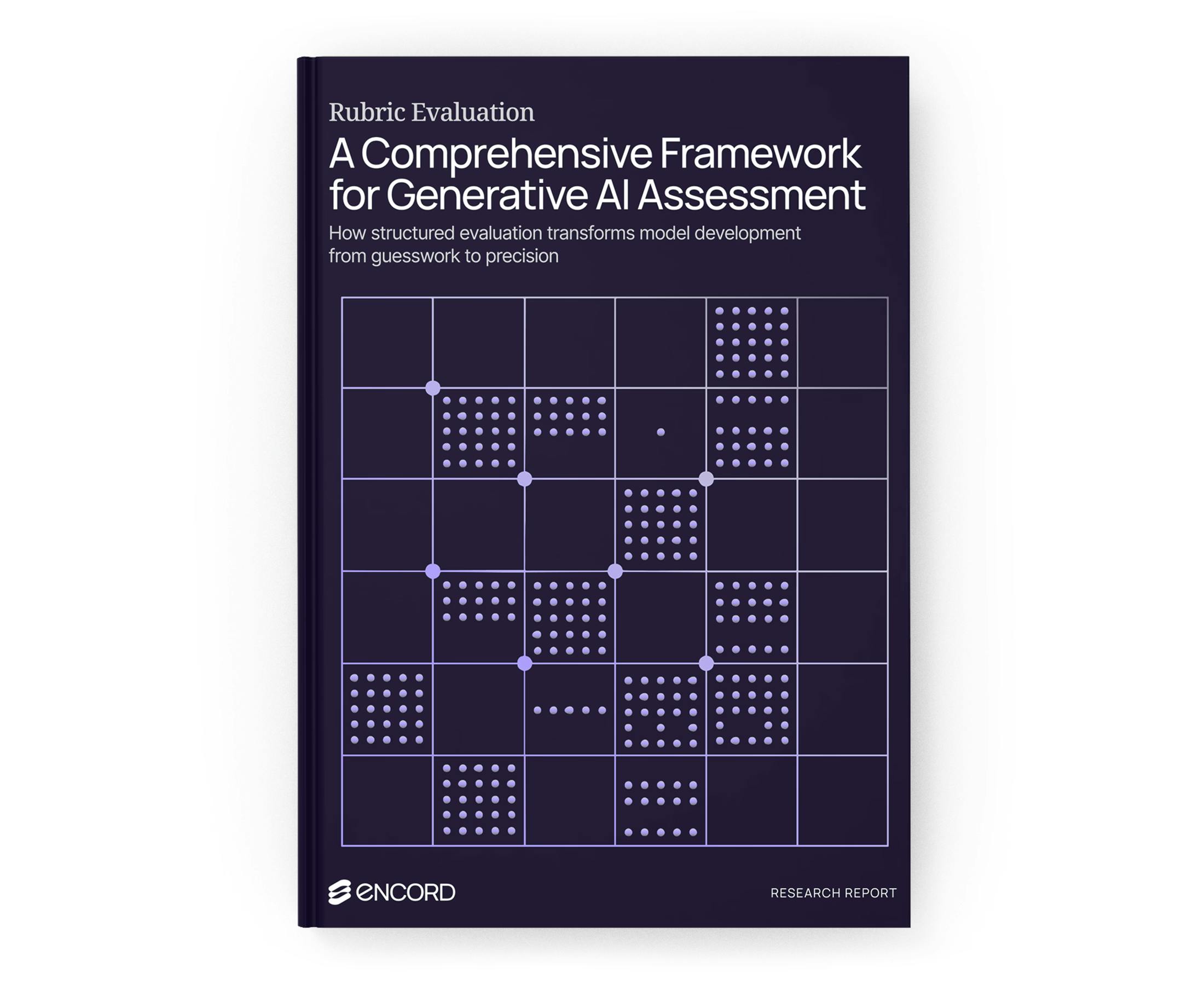A comprehensive framework
Rubric Evaluation:
How to Measure an AI Model

A comprehensive framework
Rubric Evaluation:
How to Measure an AI Model

Key Insights
PREVIEW
The evaluation of generative AI models has reached a critical inflection point. As these systems tackle increasingly complex tasks - from generating human-like speech to writing sophisticated code - traditional evaluation methods are proving inadequate. Simple pass/fail assessments or single-metric evaluations fail to capture the nuanced requirements of real-world applications, leaving developers with incomplete pictures of model performance and unclear paths for improvement.
Consider evaluating a text-to-speech system. Is it enough to know that the audio "sounds good"? What about clarity, naturalness, pronunciation accuracy, or adherence to the input text? A binary assessment might miss that while the audio is crystal clear, it completely mispronounces technical terms, or that while the pronunciation is perfect, the emotional tone is entirely inappropriate for the context.
This is where rubric evaluation transforms the assessment landscape. Rather than reducing complex model outputs to single scores, rubric evaluation provides structured, multi-dimensional feedback that captures the full spectrum of performance requirements. It's the difference between a doctor saying "you're sick" versus providing a detailed diagnosis with specific symptoms, severity levels, and treatment recommendations.
In this comprehensive guide, we'll explore how to design, implement, and leverage rubric evaluation systems using a real-world text-to-speech evaluation scenario. You'll learn not just the theory, but the practical implementation details, complete with code patterns, analysis techniques, and actionable insights that you can apply to not just text-to-speech, but any generative AI projects.
Every effective rubric evaluation system consists of three fundamental elements:
1. Evaluation Criteria (What to Measure): These are the specific dimensions along which you assess model performance. For our text-to-speech example, criteria might include audio quality, language accuracy, prompt alignment, and correctness. Each criterion targets a distinct aspect of the desired output, ensuring comprehensive coverage of
performance requirements.
2. Performance Levels (How to Score): Rather than binary pass/fail judgments, rubrics define multiple performance levels—typically ranging from "poor" through "excellent." Each level includes detailed descriptors that clearly articulate what constitutes that level of performance, removing ambiguity from the evaluation process.
3. Weighting Systems (What Matters Most): Not all criteria carry equal importance. A sophisticated rubric evaluation system allows for differential weighting, enabling you to prioritize aspects that matter most for your specific use case. Perhaps perfect pronunciation matters more than audio format, or contextual appropriateness outweighs minor
grammatical variations.
Traditional "golden dataset" approaches assume there's a single correct answer for any given input. While this works for simple classification tasks, it breaks down when evaluating creative, contextual, or multi-faceted outputs. Consider these limitations:
Rubric evaluation addresses these limitations by acknowledging that quality exists on a spectrum and that different aspects of performance can be independently assessed and weighted according to real-world priorities.
Throughout this guide, we'll use a comprehensive text-to-speech evaluation rubric example. Imagine you have a generative audio model that takes in sentences to be turned into sound and an accompanying prompt which might describe elements like tone, gender, the background scene, and more.
Clearly, such a complex scenario does not have just one correct output. In fact there are probably many excellent outputs. As such, the rubric evaluation methodology serves as an ideal tool for evaluating the performance of our system.
We have decided on assessing four major categories:
Each category contains multiple specific criteria, creating a comprehensive evaluation framework that captures the full spectrum of text-to-speech performance requirements.

Interactive rubric showing detailed criteria and performance level descriptions for text-to-speech evaluation
Rubric Evaluation
A Comprehensive Framework for Gen AI Assessment